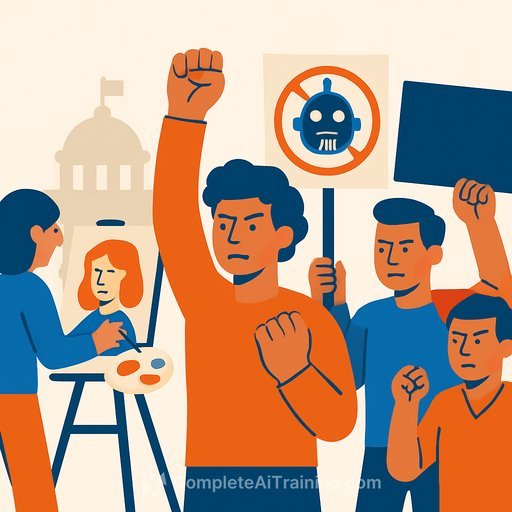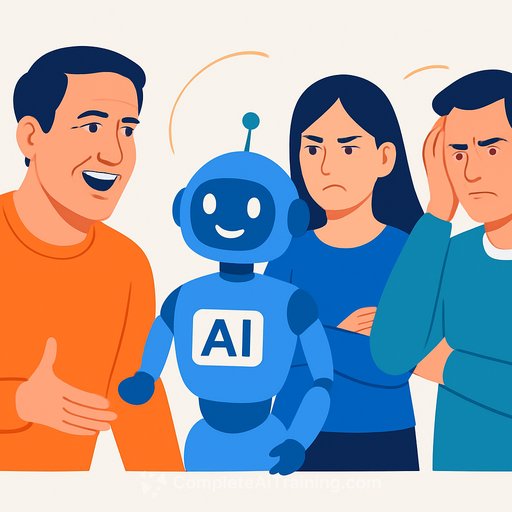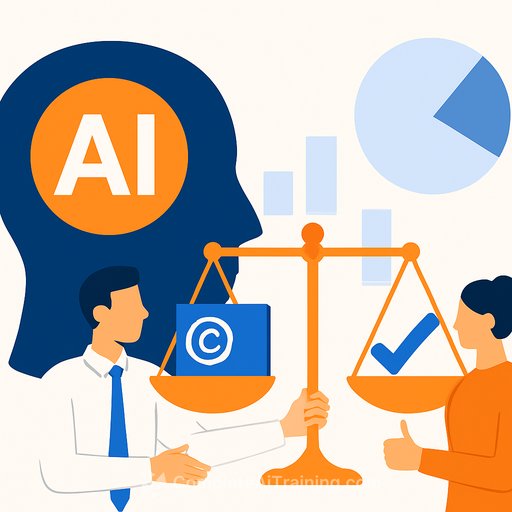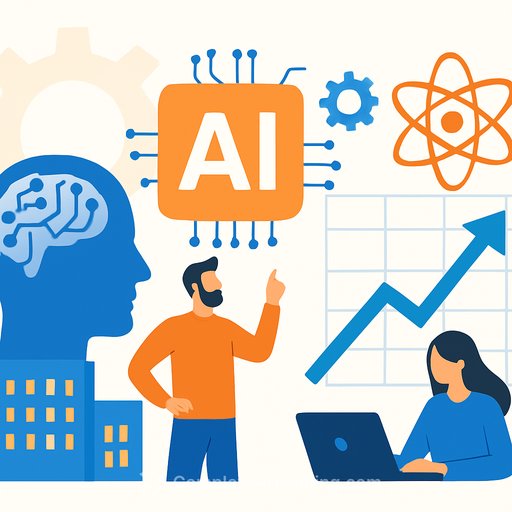AI won't steal culture-unless we let it
Australian artists are raising the alarm. Holly Rankin, Dan McNamee, and Yorta Yorta rapper Adam Briggs warn that AI can strip-mine our styles, stories, and sounds without consent.
If you make art for a living, this isn't abstract. It's your voice, your income, and your community's heritage on the line.
What's at stake
- Consent: Models trained on your work without permission.
- Credit: Your style replicated with zero attribution.
- Compensation: Your revenue redirected to platforms and prompts.
- Culture: Indigenous and local stories scraped, remixed, and commodified.
Practical steps to protect your work now
- Use Content Credentials (C2PA): Attach tamper-evident provenance to new works. Learn more at c2pa.org.
- Opt out where possible: Check if your images were used and request removal via Have I Been Trained.
- Set "no-AI" signals: Add noai/noscrape meta tags, robots.txt disallows, and visible "No AI training" notices on your site and portfolio.
- Lock your contracts: Add clauses forbidding AI training, synthetic derivatives, and dataset storage without written consent and payment.
- Protect source files: Share finals, keep layered/source files private, and watermark where appropriate (paired with C2PA so credits persist).
- Register your copyrights: Documentation matters for takedowns, licensing, and negotiation leverage.
- Track misuse: Set up reverse image search alerts and lyric/beat/text monitoring for suspicious matches.
- Use tools with "no-train" policies: Read the data policy before you upload. Avoid platforms that retain rights to train on your content.
- Collective action: Coordinate with your guilds, labels, publishers, and agencies to standardize "no training" terms and enforcement.
Template language you can copy
- No AI training: "License excludes any use for machine learning, AI model training, or dataset creation."
- No synthetic lookalikes: "No creation of derivative works intended to imitate the artist's voice, likeness, or style without separate written consent and negotiated fee."
- Attribution + provenance: "Attribution and embedded Content Credentials must be preserved in all uses."
- Data deletion: "Licensee must delete all files upon request and confirm deletion of any downstream copies or datasets."
- Penalties: "Unauthorized AI use incurs a fee of [X] times the original license plus legal costs."
For Indigenous and community-linked work
Consult custodians and follow cultural protocols before licensing. Use contracts that restrict training and derivative generation, especially for sacred or community-specific material. Protect context, meaning, and sovereignty-some works should not be scraped, sampled, or synthesized at all.
Build with AI-without giving away your voice
- Use local or privacy-first tools. Keep sensitive data offline.
- Choose vendors with opt-out controls and no-train defaults.
- Publish with Content Credentials so audiences can verify authorship.
- Keep your creative fingerprint: style guides, references, and constraints that AI must follow-never lead.
Quick checklist
- Add C2PA to new releases.
- Post clear "No AI training" notices on your site.
- Update your contracts and licenses with anti-training clauses.
- Audit platforms you use for hidden training permissions.
- Set alerts, document evidence, and enforce your rights.
Level up your AI literacy (without losing ownership)
Want practical ways to use AI that respect your rights and your audience? Explore curated tools and courses built for creators:
Bottom line
Culture isn't a dataset. Protect your voice with consent, credit, and compensation-or someone else will package it and sell it back to your audience. Set your terms now.
Your membership also unlocks:






